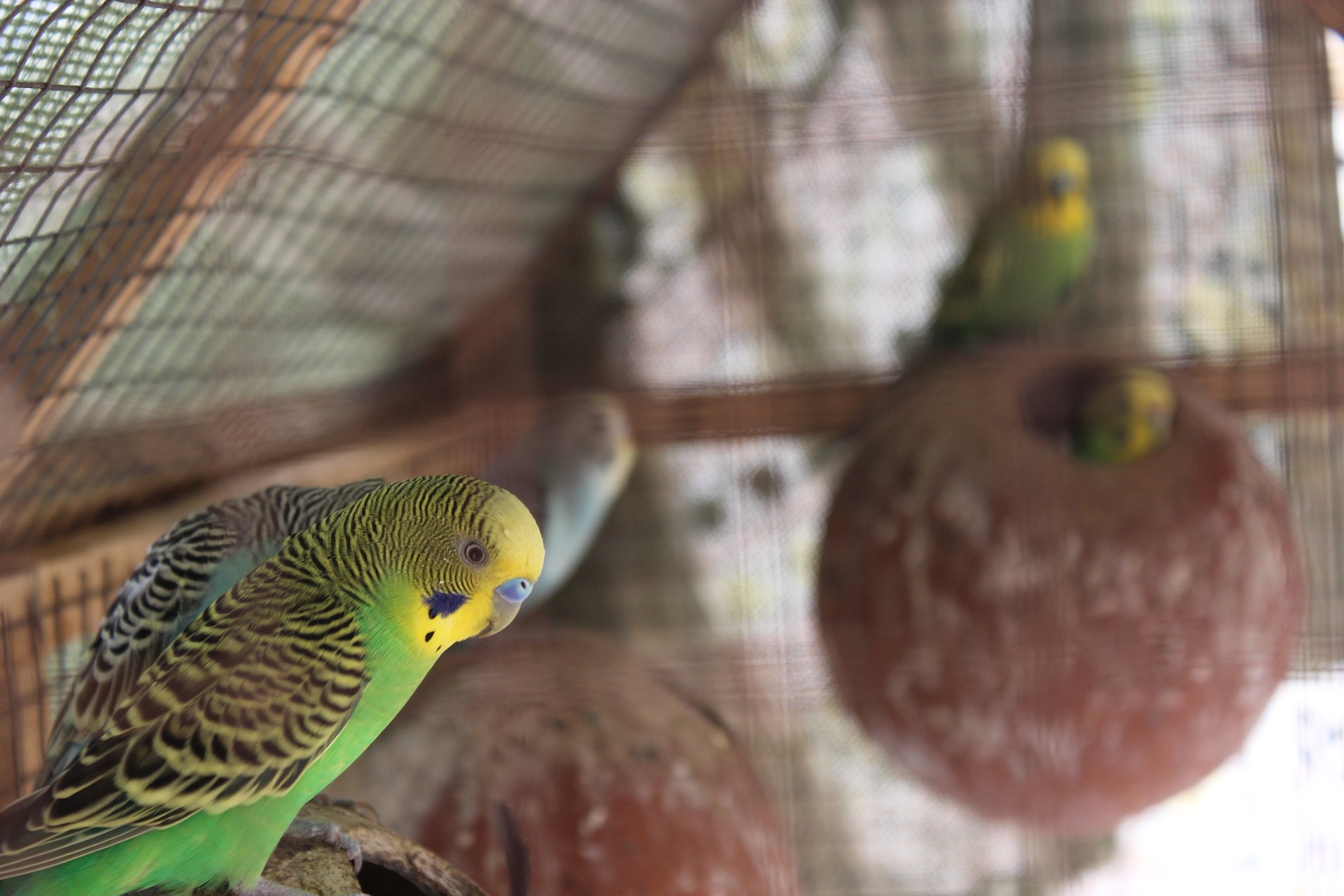Nutrition
Your bird’s diet is one of the most important considerations of its overall care.
Adequate feeding plans may be developed from a wide variety of commonly available foods, or formulated diets specially prepared for birds by commercial companies may be offered. Ask your avian veterinarian for recommendations on feeding your bird.
Environment
Temperature:
A healthy bird can tolerate temperatures that are comfortable to its owner. Sudden changes in temperature may be a potential threat to the sick bird.
Humidity:
Pet birds can adapt to a wide range of humidity levels, although birds native to subtropical climates may benefit from localized increased humidity in the home (e.g., in bathroom with running shower or frequent spraying of the feathers with water).
Light and Fresh Air:
Opportunities for supervised access to fresh air and direct sunlight (not filtered through glass or plastic) appear to be beneficial, as long as shade is available.
Housing
The largest cage that can be accommodated in the home is recommended for birds that are expected to be confined most of the time. The cage must be strong enough to resist bending or dismantling by the bird, made of non-toxic material, and designed for safety and ease of cleaning.
In most cases, the cage would need to be wider than it is tall to accommodate stretched wings; however, ample height should be provided for long-tailed birds.
Perches:
Optimum perches are clean, easily replaceable, appropriately sized, natural wood branches from pesticide-free and non-toxic trees (e.g., Northern hardwoods, citrus, eucalyptus, Australian pine).
A single, well-placed perch may be adequate for agile climbers like parrots or psittacine birds because they tend to prefer the highest perch, even if more are provided. Two perches, one on each end of the cage, should be available for species such as finches, which prefer flying or jumping to climbing.
A perch should be placed to prevent droppings from contaminating the bird’s food or water and to prevent the bird’s tail from contacting food, water or the floor of the cage.
Food and Water Bowls:
The use of wide bowls rather than deep cups displays food attractively and may encourage the bird to eat new items.
Healthy psittacines with normal ambulatory skills can easily approach the food and water bowls; therefore, it is not necessary in these cases to place bowls directly beside the perch. Birds often overeat or chew on food dishes out of boredom.
Place dishes high to minimize the risk of contamination from droppings.
Hygiene
A daily cleaning of the cage floor and bowls prevents problems with food spoilage and alerts the owner to potential signs of illness. A weekly, thorough cleaning of the cage is suggested.
 Cage Liners:
Cage Liners:
Newspapers, paper towels, or other plain cage liner paper make an ideal substrate for lining bird cages as they are easy to change and the appearance and number of the droppings can be monitored on a daily basis.
Activity
In appropriate species, opportunities may be provided for exercise in the form of supervised freedom from the cage.
Pet birds are intelligent, active animals whose psychological needs should be addressed.
Locate the cage near family activity in the home.
Toys provide diversion as do a variety of foods.
Use your own imagination, keeping within safe parameters and provide entertainment and enrichment for your pet birds.
Toys
Toys are useful as mental diversions and tend to encourage physical exercise and beak wear; however, they must be selected with the safety of your bird in mind.
“Chewable” items include branches, pine cones, rawhide dog chews, soft white pine, and natural fiber rope. Check rope material frequently and remove the rope when it becomes soiled or frayed. Unraveled rope strands can become tangled around the toes.
General Care
The healthy, well-fed pet bird requires minimal upkeep. A regular visit to an avian veterinarian for a routine health examination is advised in order to detect potential problems early.
During the molting of feathers, additional fat, protein and vitamins may be required in the diet. As a new feather develops, the bird may pick at the pin feather cover to open it. This should not be interpreted as “feather picking” or the presence of mites.
Pure water is the most appropriate feather spray. Keep feathers dry and free of oily substances. Soiled feathers may be gently cleaned with a mild detergent solution (e.g., baby shampoo) followed by thorough warm water rinsing and drying.
Wing clip may be desired to prevent escape or injury, or for taming and training. Your veterinarian can advise you on wing clipping.
It may be wise to remove open leg bands to prevent injury. If a closed band must remain on the leg for identification purposes, check under the band occasionally for signs of dirt accumulation, swelling, or constriction of the leg.
To Avoid
There are a variety of potential household dangers and cage furniture items that are NOT recommended for pet birds:
- Sandpaper-covered perches irritate and injure the bottoms of the feet.
- Air pollutants such as cigarette smoke, insecticides, and toxic fumes from over-heated non-stick-coated utensils can cause serious respiratory problems and even death.
- Mite boxes or mite sprays expose birds to potential poisons.
- Easily dismantled toys such as balsa wood, small link chain items, toys with metal clips or skewers, or those with lead weights can be ingested causing toxicity or intestinal problems.
- Access to toxic houseplants, ceiling fans, cats, dogs, or young children can lead to injury or illness.
Updated 12/13
This article reprinted from: AAV
Image Courtesy of: Public Domain Images
